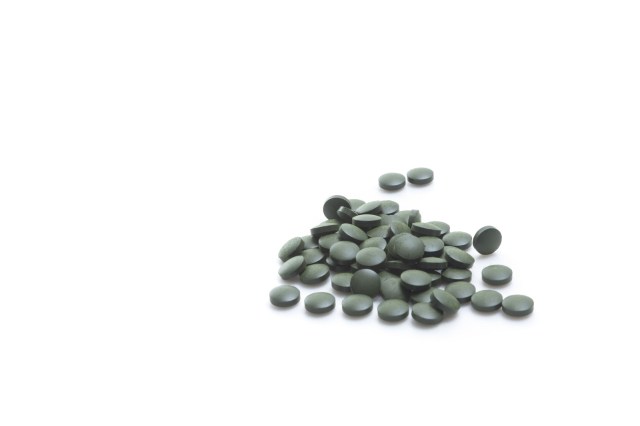
That’s one way to sum up the situation.
Wedged between the Japanese mainland, Shikoku, and Kyushu, the Seto Inland Sea, or Inland Sea for short, is world-renowned for its stunning views and pristine waters.
However, Japan’s Ministry of the Environment has recently deemed that the water mass has become “too pretty.”
▼ Visitors of the area are often treated to gorgeous views such as this one.
Logically speaking, crystal clear waters are often used as a visual indicator when it comes to determining how healthy a body of water is. But for the case of the Inland Sea, being too beautiful meant something else more problematic.
The main issue? Not enough nutrients in the water.
▼ This isn’t something any nutrient supplement pills can fix either.
For more context, efforts to preserve the Inland Sea came about in the 1980s due to the development of local factories, which spurred the prevalence of red tides in the region — a natural phenomenon in which aquatic microorganisms converge in large clumps on water surfaces. This phenomenon occurs specifically when nutrients such as nitrogen and phosphorus are abundant in the water, and run-off from factories during this time period, rich in these types of particles, allowed aquatic microorganisms to temporarily flourish.
However, algae blooms such as red tides are harmful to local wildlife, and they often leave multitudes of dead marine animals in their wake. Red tides also poison shellfish in the area, and naturally this destruction of marine life leads to financial consequences for local fishermen as well.
▼ Example photo of a red tide outbreak in a Japanese harbor.
To prevent ecological unbalance, the Japanese government moved forward with legislation, enacting a law focused on protecting the delicate environment of the Inland Sea. While red tides have decreased over recent years due to regulations on factories, their decline has also led to a sharp fall for the Inland Sea’s nitrogen and phosphorous levels.
Ironically, with less red tides the waters of the Inland Sea may seem more clean, but too few red tides are also a cause for alarm as that may indicate a severe decrease in nutrients within the water.
Specific strains of seaweed depend on in-water nutrients, and native species such as the Japanese sand lance eat microorganisms that also feed on them, putting certain marine life populations at risk. At the same time, officials will have to take a cautious approach as to not affect the populations of yellowtail and sea bream in the local area, which have been impacted by red tides in the past.
▼ A closer look at the Japanese sand lance.
While no in-depth details have been published as to how the Japanese government will improve the nutritional balance of the Inland Sea’s waters, so far the plan calls for the cooperation of local governing bodies in regulating the amount of water discharged from water treatment plans as well as dams and reservoirs.
It will no doubt be a task requiring a good amount of personnel and time, but hopefully everything goes smoothly and no invasive crayfish show up to cause more issues.
Source: Livedoor News via Hachima Kiko
Top image: Wikipedia/Waka moana
Insert images: Pakutaso (1, 2), Wikipedia/melvil, Wikipedia/Izuzuki
● Want to hear about SoraNews24’s latest articles as soon as they’re published? Follow us on Facebook and Twitter!




 Japan’s secret garbage problem–and what you can do to help
Japan’s secret garbage problem–and what you can do to help China’s don’t-go-to-Japan warning seems to be affecting Osaka’s Namba and Dotonbori neighborhoods
China’s don’t-go-to-Japan warning seems to be affecting Osaka’s Namba and Dotonbori neighborhoods Japan’s human washing machines will go on sale to general public, demos to be held in Tokyo
Japan’s human washing machines will go on sale to general public, demos to be held in Tokyo Studio Ghibli adds new Kiki’s Delivery Service music box to its anime merchandise shop in Japan
Studio Ghibli adds new Kiki’s Delivery Service music box to its anime merchandise shop in Japan Style your hair like an old-school Japanese beauty with the marumage hair kit【Video】
Style your hair like an old-school Japanese beauty with the marumage hair kit【Video】 Popular Japanese ramen restaurant Ichiran’s lucky bags are great value for money
Popular Japanese ramen restaurant Ichiran’s lucky bags are great value for money Chinese government’s don’t-go-to-Japan warning has heartwarming non-effect on Yokohama Chinatown
Chinese government’s don’t-go-to-Japan warning has heartwarming non-effect on Yokohama Chinatown Shizuoka senior charged with firearms violation after giving toy guns to the police
Shizuoka senior charged with firearms violation after giving toy guns to the police Getting a driver’s license in Japan the hard way — Part 5: The second written test
Getting a driver’s license in Japan the hard way — Part 5: The second written test Studio Ghibli stamps lift your spirits with motivational phrases from Totoro
Studio Ghibli stamps lift your spirits with motivational phrases from Totoro Japan super budget dining – What’s the best way to spend 1,000 yen at 7-Eleven?
Japan super budget dining – What’s the best way to spend 1,000 yen at 7-Eleven? Nintendo’s Kirby now delivering orders at Kura Sushi restaurants, but not in Japan
Nintendo’s Kirby now delivering orders at Kura Sushi restaurants, but not in Japan Yoshinoya adds first-ever chain-wide ramen with new beef and pork-broth noodle hot pot meals
Yoshinoya adds first-ever chain-wide ramen with new beef and pork-broth noodle hot pot meals Japan considering raising international traveler departure tax even more than previously reported
Japan considering raising international traveler departure tax even more than previously reported Is China’s don’t-go-to-Japan warning affecting tourist crowds in Shibuya’s Don Quijote?
Is China’s don’t-go-to-Japan warning affecting tourist crowds in Shibuya’s Don Quijote? Is China’s don’t-go-to-Japan warning affecting tourist crowd sizes in Nara?
Is China’s don’t-go-to-Japan warning affecting tourist crowd sizes in Nara? Japanese train company is letting fans buy its actual ticket gates for their homes
Japanese train company is letting fans buy its actual ticket gates for their homes Japanese town suing resident for being a jerk
Japanese town suing resident for being a jerk New fish discovered and named “Vanderhorstia supersaiyan” for obvious reasons
New fish discovered and named “Vanderhorstia supersaiyan” for obvious reasons Starbucks Japan unveils new Christmas goods and a rhinestone tumbler that costs 19,500 yen
Starbucks Japan unveils new Christmas goods and a rhinestone tumbler that costs 19,500 yen Real-world Nausicaa Ghibli anime glider completes its final flight in Japan【Video】
Real-world Nausicaa Ghibli anime glider completes its final flight in Japan【Video】 Brand-new Pokémon park opens in Japan with larger-than-life-size Lapras【Photos】
Brand-new Pokémon park opens in Japan with larger-than-life-size Lapras【Photos】 Unique inclined elevator in Japan leads to a town that inspired Studio Ghibli’s Spirited Away
Unique inclined elevator in Japan leads to a town that inspired Studio Ghibli’s Spirited Away Is China’s don’t-go-to-Japan warning affecting tourist crowds in Tokyo’s Asakusa neighborhood?
Is China’s don’t-go-to-Japan warning affecting tourist crowds in Tokyo’s Asakusa neighborhood? The 10 best day trips from downtown Tokyo【Survey】
The 10 best day trips from downtown Tokyo【Survey】 Naturally brown-haired Osaka student sues government for forcing her to dye her hair black
Naturally brown-haired Osaka student sues government for forcing her to dye her hair black Japanese government considering tripling departure taxes to combat overtourism
Japanese government considering tripling departure taxes to combat overtourism Survey asks foreign tourists what bothered them in Japan, more than half gave same answer
Survey asks foreign tourists what bothered them in Japan, more than half gave same answer Japan’s deadliest food claims more victims, but why do people keep eating it for New Year’s?
Japan’s deadliest food claims more victims, but why do people keep eating it for New Year’s? We deeply regret going into this tunnel on our walk in the mountains of Japan
We deeply regret going into this tunnel on our walk in the mountains of Japan Studio Ghibli releases Kodama forest spirits from Princess Mononoke to light up your home
Studio Ghibli releases Kodama forest spirits from Princess Mononoke to light up your home Major Japanese hotel chain says reservations via overseas booking sites may not be valid
Major Japanese hotel chain says reservations via overseas booking sites may not be valid Put sesame oil in your coffee? Japanese maker says it’s the best way to start your day【Taste test】
Put sesame oil in your coffee? Japanese maker says it’s the best way to start your day【Taste test】 The top 10 annoying foreign tourist behaviors on trains, as chosen by Japanese people【Survey】
The top 10 annoying foreign tourist behaviors on trains, as chosen by Japanese people【Survey】 No more using real katana for tourism activities, Japan’s National Police Agency says
No more using real katana for tourism activities, Japan’s National Police Agency says Starbucks Japan reveals new sakura drinkware collection, inspired by evening cherry blossoms
Starbucks Japan reveals new sakura drinkware collection, inspired by evening cherry blossoms
Leave a Reply